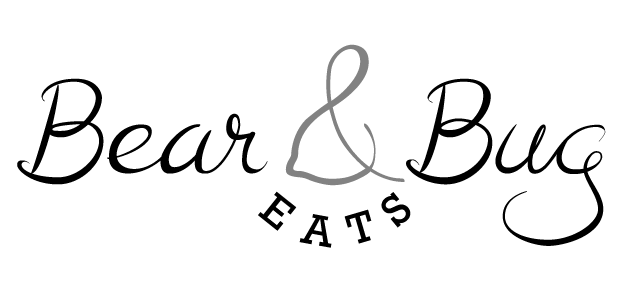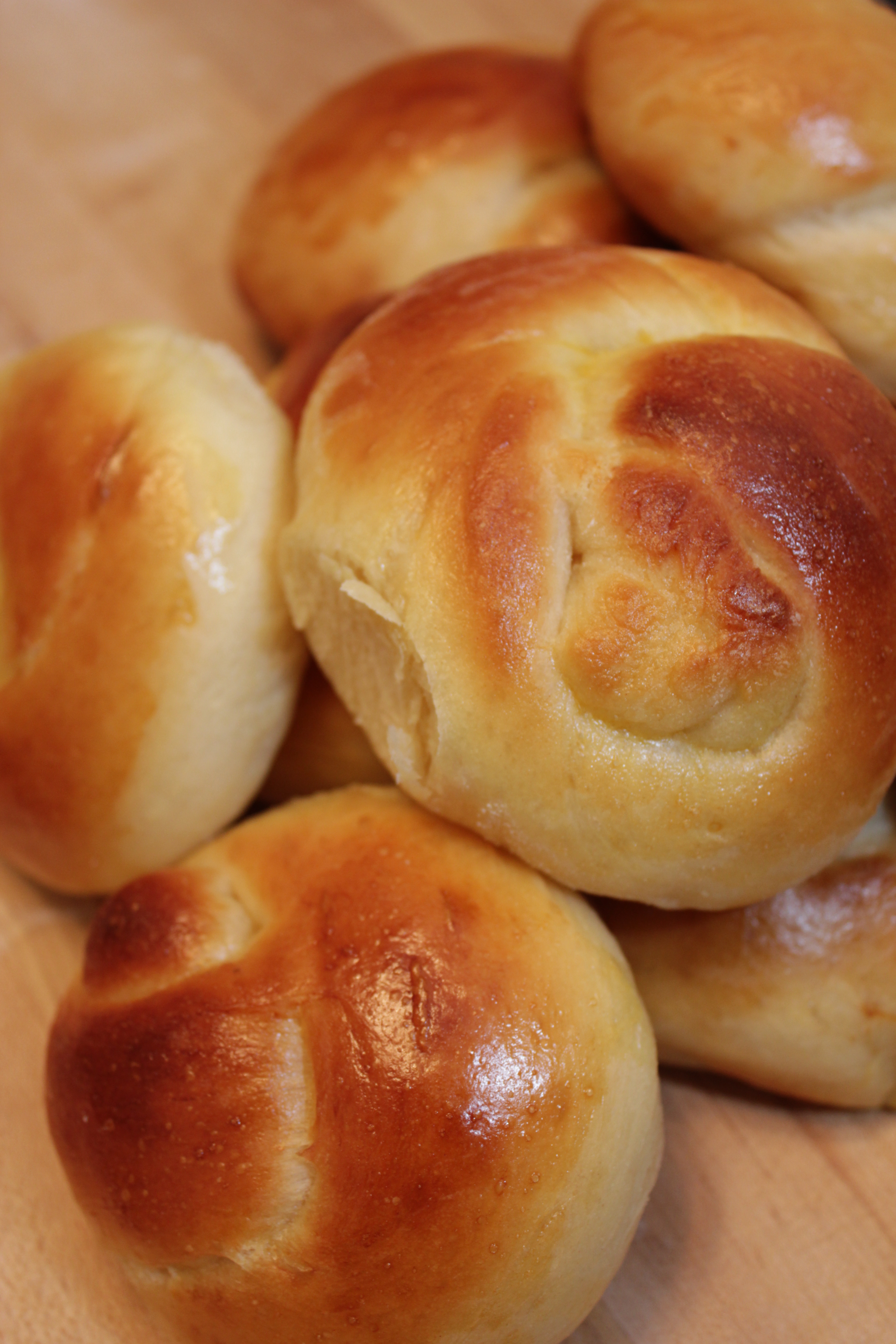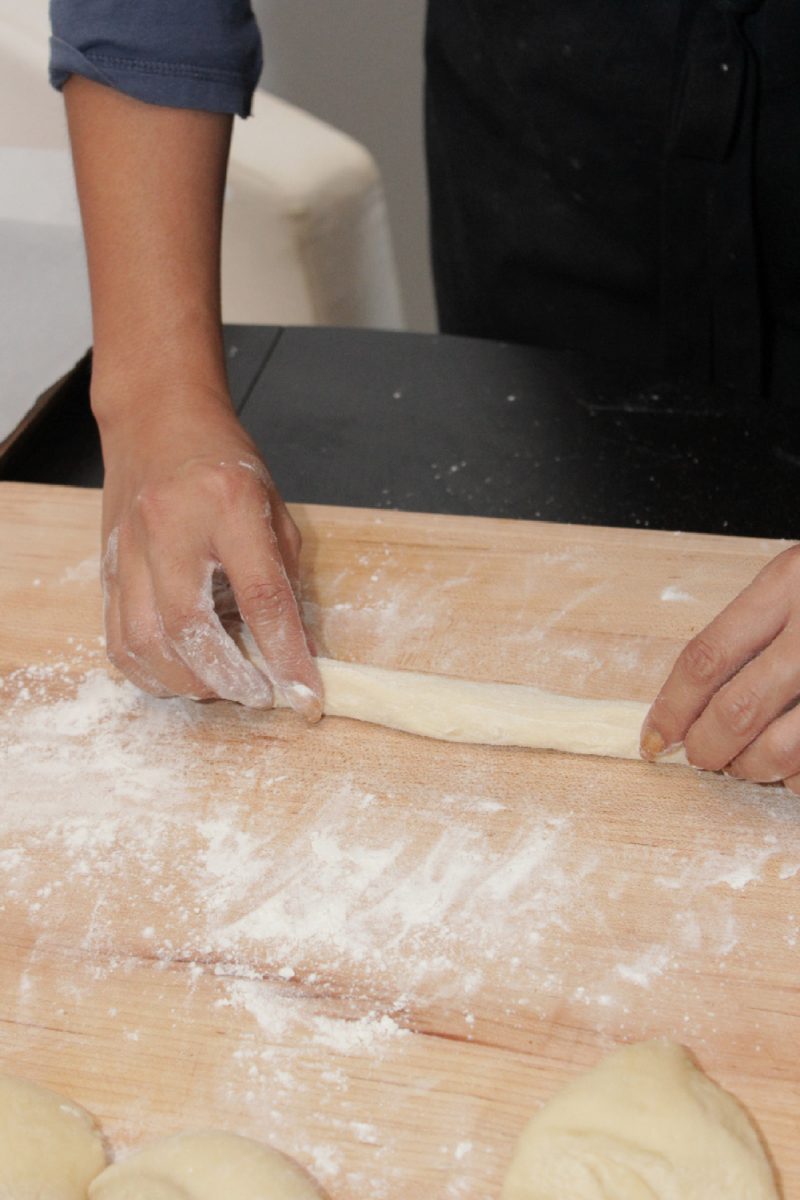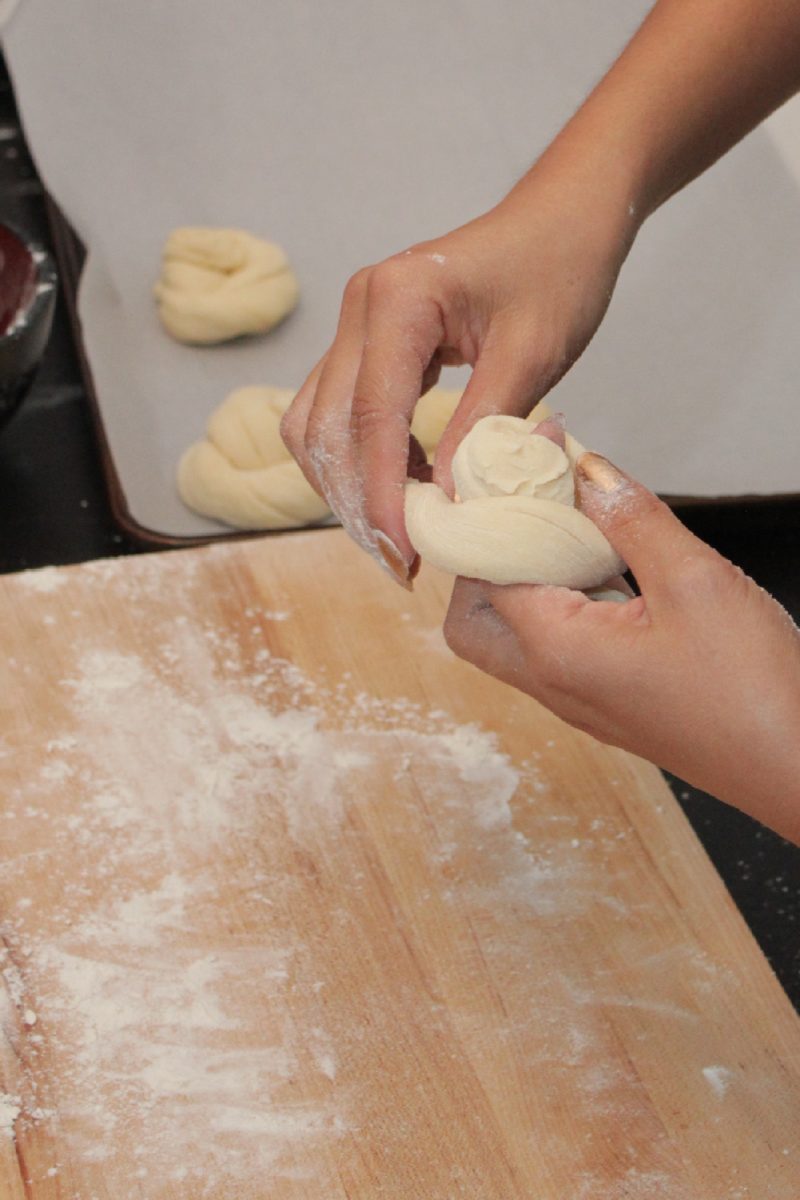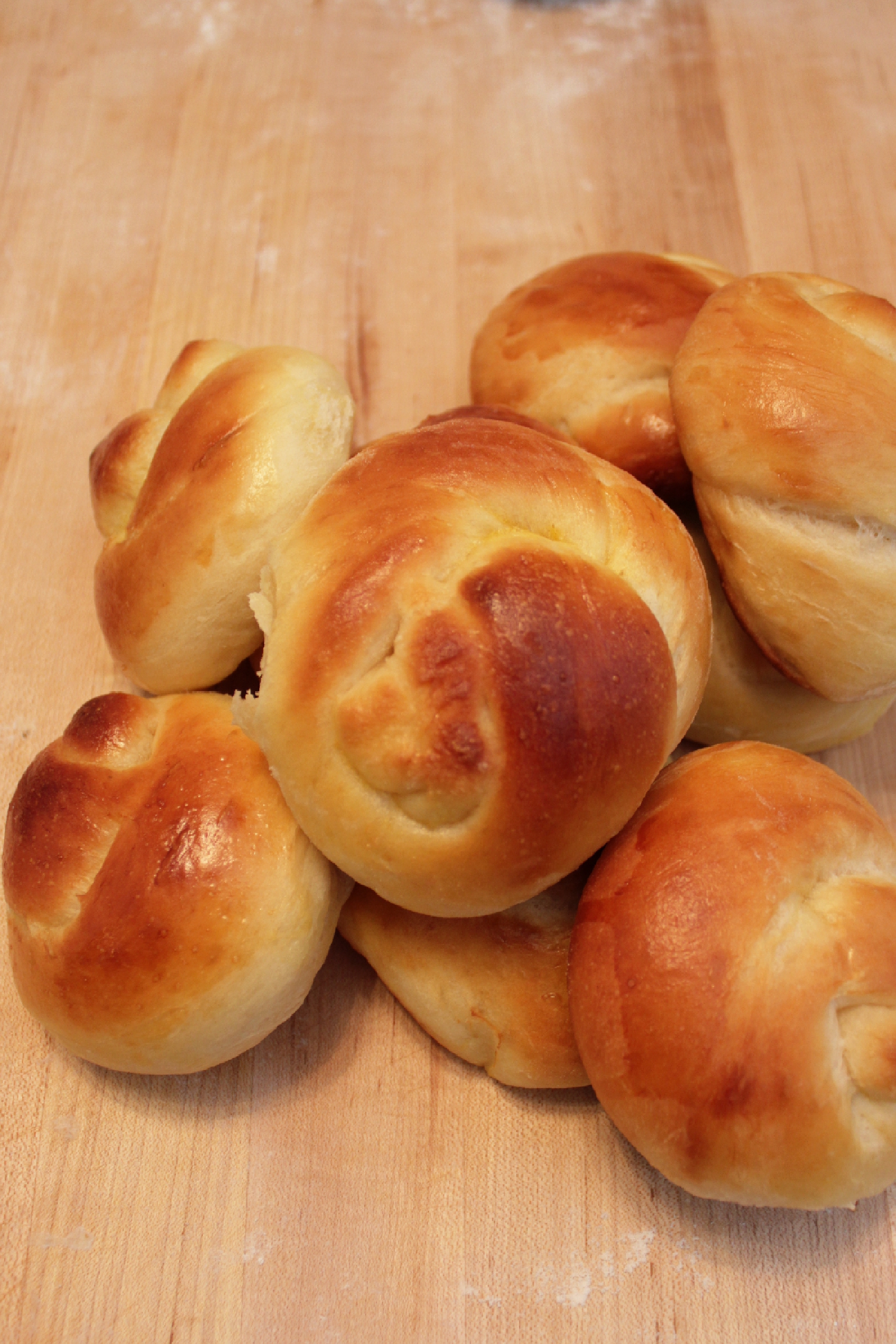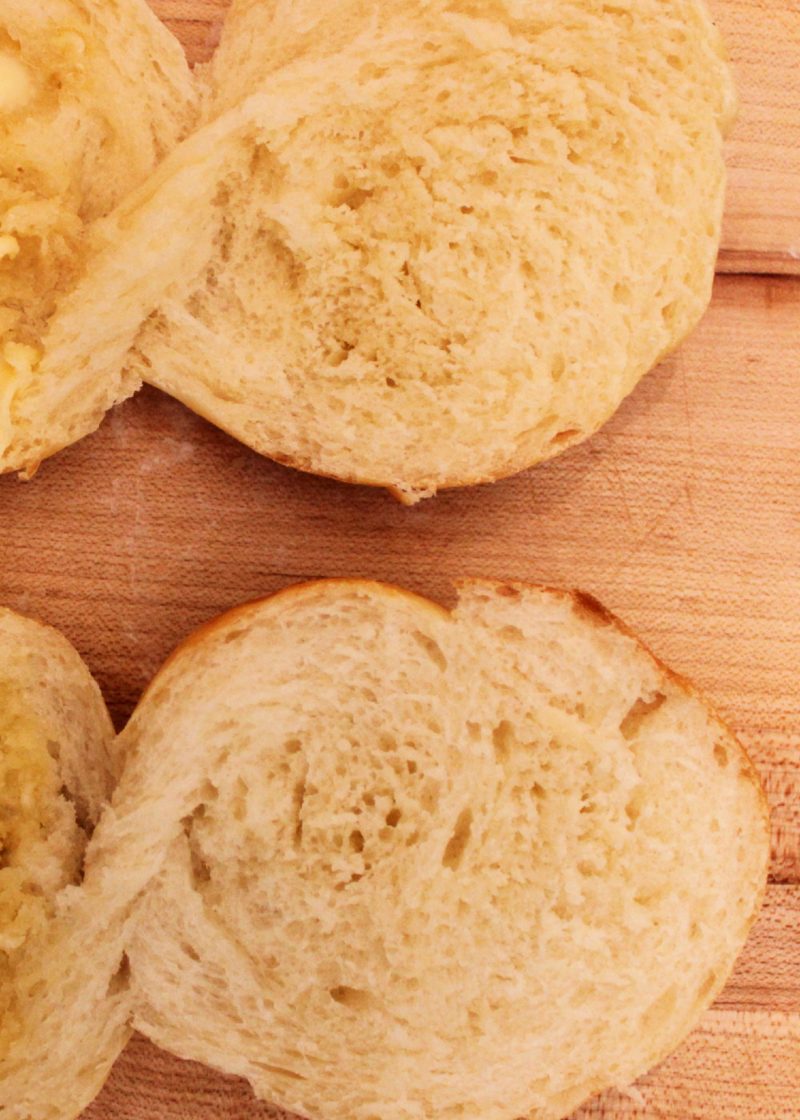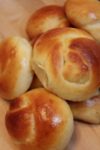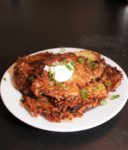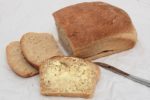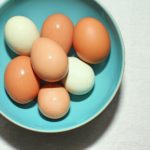This, like the Chocolate Crinkles, is a family recipe: the Gins, my maternal grandmother’s family, have been making this for decades. I’ve eaten countless numbers of these rolls at my grandmother’s house, often in the form of salami sandwiches (she’s one of those people who buys treats for the guests when they come over, and she definitely has my number). My aunts have also made these forever. This Thanksgiving, one of my aunts put a photo of her recipe copy–in my grandmother’s handwriting–online, and I transcribed it.
I always supposed that my grandmother, or someone in my family, had invented this family gem. I found out recently that my cousins thought that some ancient Gin invented these in China and carried the recipe over the Pacific to pass it down to their descendants. They were crushed when my aunt broke the news that the original recipe was from the very white, very fictional baker Betty Crocker. (It also occurred to them after this revelation that the Chinese don’t eat potatoes.)
Regardless of their origins, these potato rolls are here to stay. I made them once for Friendsgiving and they were devoured, even though I hadn’t really let them rise enough. This time, I tried some tweaks to the original recipe.
I started the recipe and then split it in two, using bread flour for half and all-purpose for the other. Robby and I then did an extremely scientific test, consisting of eating two rolls (and in Robby’s case, smelling extensively). Here’s the photo evidence:
The top roll is an all-purpose flour roll, and the lower is a bread flour roll. You can see that the lower one has smaller holes and is less fluffy-looking, which matches what I found on The Internetz: bread flour rolls have more chewy, firm substance–just the way I like them. The all-purpose rolls were more tender and soft–just the way Robby likes them. (For the record, Sommelier Robby also tells me that the bread flour ones were more aromatic. Clearly I should have smelled them more closely.) This is because bread flour is made from wheat that has a higher protein (gluten) content, which is what creates that height and bounce in bread.
The verdict: If you have a preference, you can absolutely influence the texture through your flour choice. If you don’t, or if you only have one type of flour on hand, they’ll still turn out great.
Both versions are soft with lightly golden tops from the egg wash, with just a hint of sweetness. I love them best fresh with unholy amounts of butter, although we enjoyed them this week as the outsides of ham and Gruyere sandwiches.
This recipe as written makes 24 big rolls or 36 small ones. I considered halving it to make a more modest 12-18, but I only make rolls if I want to feed a large number of people. Or the two of us for a week.
A couple of copious number of notes:
- This is a two-rise recipe, and as such, it requires several hours. If they don’t look like they rose enough, leave them alone–the dough really will triple if you let it.
- The original recipe calls for non-fat milk powder. I’ve rewritten it to call for milk instead, and reduced some of the water to make up for the difference. I used non-fat milk, but any sort of milk should work here. If you prefer milk powder, use 3 tablespoons with 2 1/4 cups boiling water.
- I also used rehydrated potato flakes, but you should also be able to use leftover mashed potatoes. You want 2 1/2 cups of thin mashed potatoes (a pureed consistency). Simply thin potatoes with milk until you have the right amount.
- Dough may refrigerated after the first rise and folding down. Oil dough lightly and cover to prevent it from drying out; use within 1 day.
- Dough may also be frozen after first rise! Oil dough and place in heavy ziploc bag before freezing.
- I topped these with egg wash only, but some family versions are also topped with poppy seeds. I think sesame seeds would also be great.
- I used King Arthur brand flour. I’m telling you this not because you need to–although it’s excellent flour–but because King Arthur flour in general has a higher protein content than other types of flour (for instance, the bread flour has almost 13% protein). This means that if you use another brand of flour, your rolls will likely be even softer and more tender than these.
I’m having a lot of fun making these family recipes. It’s a connection to the women who have made them (though if any men in the family show up with signature recipes that I can borrow, I’ll happily try them), and it’s a point of pride to see if I can replicate the dishes that are linked with tradition in my mind.
Hopefully I can not make tradition the part where I cut the first batch of bread into twelve equalish blobs and shaped them, then cut the other batch of bread and shaped…eleven rolls. I was sure that I had sliced the dough into halves, quarters, twelfths so they would be as even as possible, but it seemed for sure like I’d gone crazy and sliced one of the halves into five (who does that??) As I prepared to put both trays away for rising, Robby pointed at the bench scraper, which was propped at an angle, and said, “What’s that?” It was lying on top of the twelfth dough blob.
Yep. Welcome to my kitchen.
* Photo credit for all the best photos, including the ones that make my hands look unrealistically elegant, goes to Robby*
(This post contains affiliate links, which means that if you buy something through one of them, I get a tiny commission. Thanks for supporting Bear & Bug Eats!)
PrintThe Gin Family Potato Rolls
These golden, soft, ever-so-slightly-sweet rolls are a staple at our family’s holiday table. I hope they bring the same joy to yours!
- Prep Time: 3 hours 30 minutes
- Cook Time: 0 hours
- Total Time: 3 hours 42 minutes
- Yield: 24-36 rolls 1x
Ingredients
Rolls
- 1 cup instant mashed potato flakes
- 3/4 cup nonfat milk
- 1 1/2 cups boiling water
- 2/3 cup vegetable oil
- 2 eggs
- 2 1/4 teaspoons dry yeast (1 package)
- 2/3 cup sugar
- 1 teaspoon salt
- 7–8 cups bread or all-purpose flour
Egg Wash
- 1 egg yolk
- 1 teaspoon water
Instructions
- Make “potatoes” by putting flakes in a small pot and adding boiling water. Stir in milk. You’ll end up with about 2 1/2 cups liquidy “mashed potatoes.” Let cool to 130 degrees or lower before using.
- Stir together potatoes, oil, eggs, yeast, sugar, salt, and 1 cup flour. Let sit for 3-5 minutes.
- Place 6 cups flour in a large bowl. Add wet mixture and stir to incorporate. Gradually add flour as needed until dough comes away more or less clean from the sides of the bowl.
- Knead, adding flour as necessary, until dough is no longer sticky and comes away from hands cleanly.
- Oil both bowl and dough ball. Cover and let rise in a warm spot for 1-2 hours. Dough will triple in size (yes, really).
- Fold down dough. Shape into rolls and place onto baking sheet, either lightly greased or covered with parchment paper. Cover and allow to rise another 1-2 hours.
- Preheat oven to 400 degrees. Whisk remaining egg yolk with 1 teaspoon water and brush the tops of the rolls.
- Bake until golden brown, about 12 minutes. Makes 24 delicious rolls.
